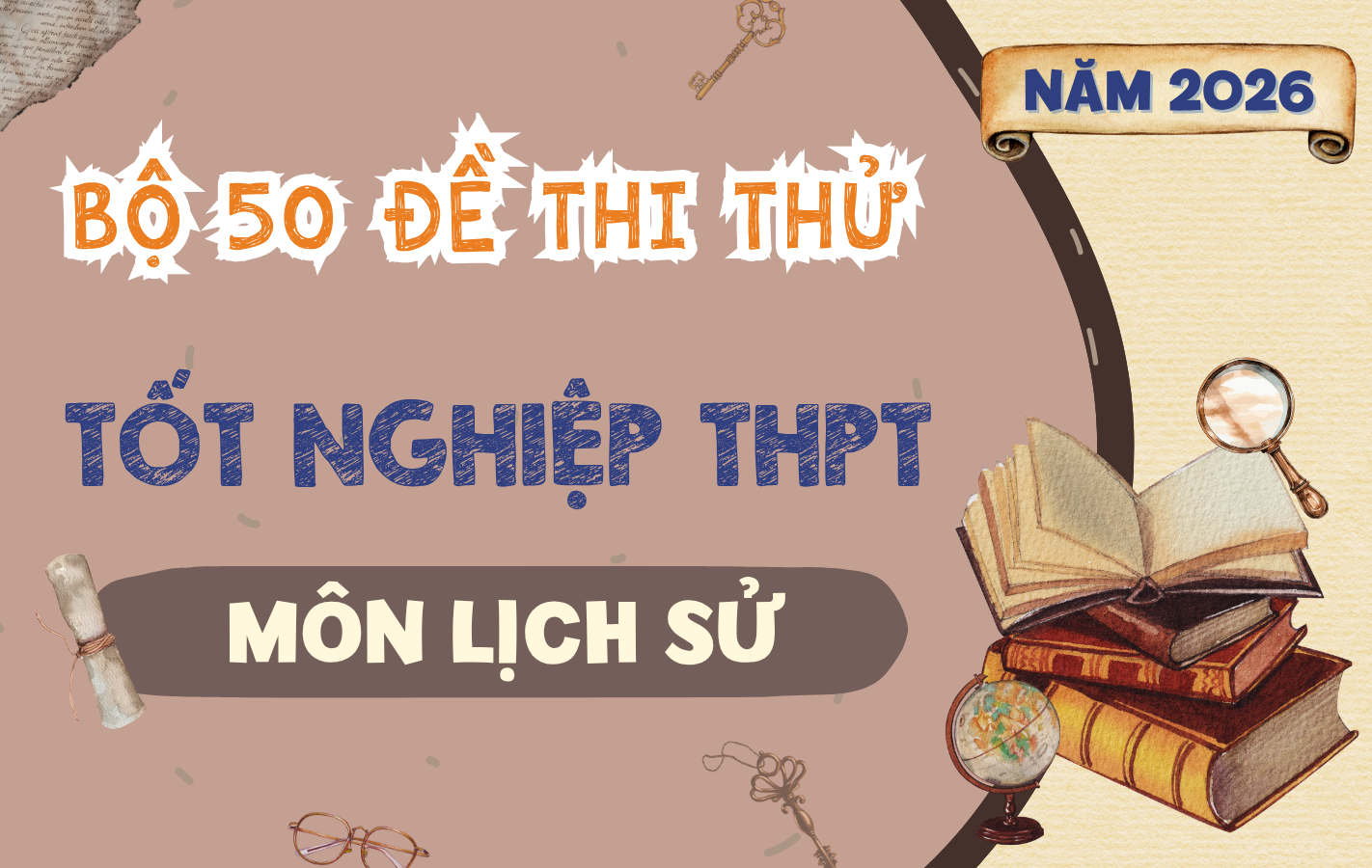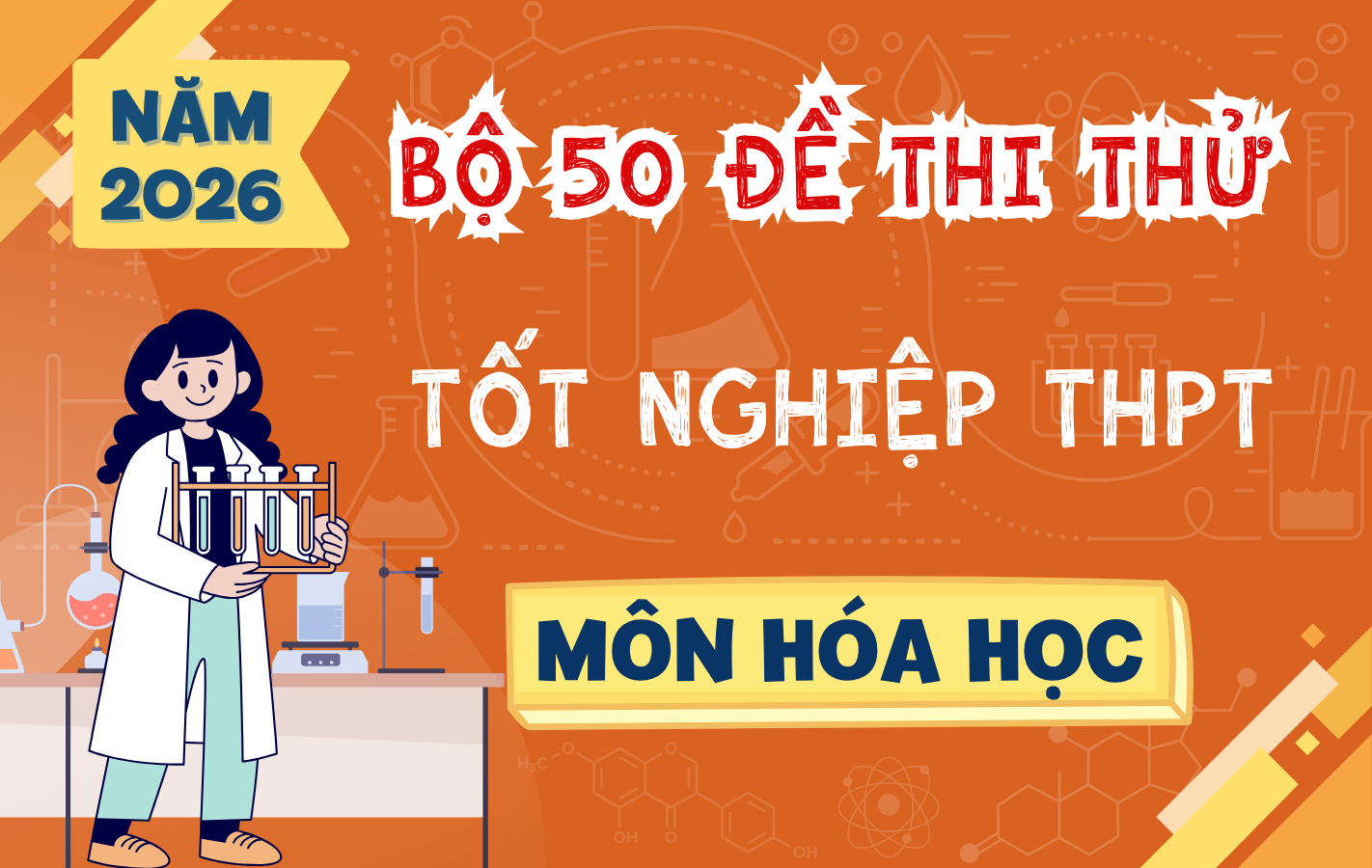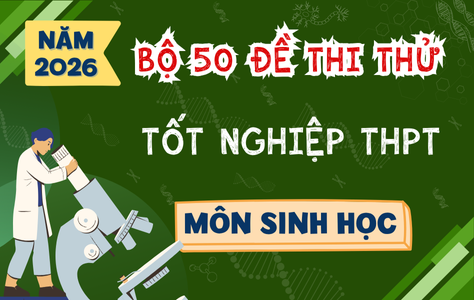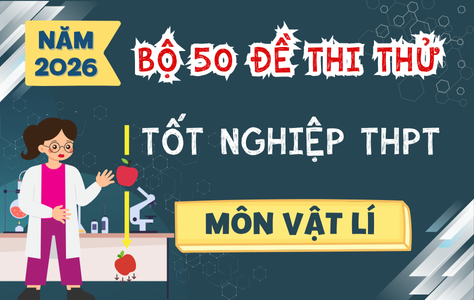Câu hỏi:
Read the following passage about Our Festival Traditions and mark the letter A, B, C, or D on your answer sheet to indicate the best answer to each of the following questions from 23 to 30.
How Green Are Our Festival Traditions?
Festivals are a time of celebration, bringing happiness and joy through various traditions. However, many of these traditions are not environmentally friendly and could harm our planet. To ensure a sustainable future, it is important to reconsider some of these practices and explore more eco-friendly alternatives.
One common festival tradition is the release of balloons and sky lanterns, especially in countries like China, India, and Japan. These beautiful sights are believed to bring good luck and carry wishes to the sky. Unfortunately, the environmental impact is significant. Balloons and lanterns often end up as litter, which is difficult to decompose. The frames of sky lanterns can harm wildlife, and animals often mistake balloons for food, putting them at risk. Furthermore, lanterns have been known to cause wildfires, endangering both nature and human safety.
Another tradition that raises concerns is fireworks. In countries like Australia and the US, fireworks displays are a staple during festivals. While they are visually stunning, fireworks release harmful chemicals into the air, contributing to pollution and poor air quality. Similar to sky lanterns, fireworks can also cause fires, which can be devastating to both the environment and communities.
Lastly, Christmas trees, whether real or artificial, are a central part of holiday decorations in homes and businesses worldwide. Real trees, when discarded, release methane and carbon dioxide, two harmful greenhouse gases that contribute to global warming. Although artificial trees can be reused for several years, their production involves harmful pollutants, and when they end up in landfills, they take centuries to decompose, further burdening the environment.
In conclusion, while festival traditions bring joy and excitement, many of them have negative environmental consequences. By choosing more sustainable practices, we can celebrate in ways that are both enjoyable and environmentally responsible, ensuring that future generations can also enjoy these traditions.
The word "decompose" in paragraph 2 is OPPOSITE in meaning to:
Đáp án đúng: B
Đáp án đúng là B
Giải thích:
"Decompose" nghĩa là "phân hủy" Từ trái nghĩa phù hợp nhất là "combine" (kết hợp).
Câu hỏi này thuộc đề thi trắc nghiệm dưới đây, bấm vào Bắt đầu thi để làm toàn bài
Bộ đề thi giúp học sinh lớp 12 làm quen với cấu trúc và nội dung đề thi tốt nghiệp THPT môn Tiếng Anh năm 2025. Đề thi được xây dựng theo định hướng của Bộ GD ĐT, bao gồm các phần Ngữ âm, Từ vựng - Ngữ pháp, Chức năng giao tiếp, Kỹ năng đọc hiểu, Kỹ năng viết và Phát âm - Trọng âm. Hệ thống câu hỏi đa dạng, bám sát chương trình học, giúp học sinh rèn luyện kỹ năng làm bài và nâng cao tư duy ngôn ngữ. Đáp án chi tiết đi kèm hỗ trợ học sinh tự ôn tập, đánh giá năng lực và chuẩn bị tốt nhất cho kỳ thi quan trọng.
Câu hỏi liên quan
Read the following passage about Our Festival Traditions and mark the letter A, B, C, or D on your answer sheet to indicate the best answer to each of the following questions from 23 to 30.
How Green Are Our Festival Traditions?
Festivals are a time of celebration, bringing happiness and joy through various traditions. However, many of these traditions are not environmentally friendly and could harm our planet. To ensure a sustainable future, it is important to reconsider some of these practices and explore more eco-friendly alternatives.
One common festival tradition is the release of balloons and sky lanterns, especially in countries like China, India, and Japan. These beautiful sights are believed to bring good luck and carry wishes to the sky. Unfortunately, the environmental impact is significant. Balloons and lanterns often end up as litter, which is difficult to decompose. The frames of sky lanterns can harm wildlife, and animals often mistake balloons for food, putting them at risk. Furthermore, lanterns have been known to cause wildfires, endangering both nature and human safety.
Another tradition that raises concerns is fireworks. In countries like Australia and the US, fireworks displays are a staple during festivals. While they are visually stunning, fireworks release harmful chemicals into the air, contributing to pollution and poor air quality. Similar to sky lanterns, fireworks can also cause fires, which can be devastating to both the environment and communities.
Lastly, Christmas trees, whether real or artificial, are a central part of holiday decorations in homes and businesses worldwide. Real trees, when discarded, release methane and carbon dioxide, two harmful greenhouse gases that contribute to global warming. Although artificial trees can be reused for several years, their production involves harmful pollutants, and when they end up in landfills, they take centuries to decompose, further burdening the environment.
In conclusion, while festival traditions bring joy and excitement, many of them have negative environmental consequences. By choosing more sustainable practices, we can celebrate in ways that are both enjoyable and environmentally responsible, ensuring that future generations can also enjoy these traditions.
The word staple in paragraph 2 could be best replaced by:
Đáp án đúng là A
Giải thích:
Xét từ "Staple" trong ngữ cảnh pháo hoa, nó có nghĩa là một "truyền thống phổ biến" trong lễ hội.
Read the following passage about Our Festival Traditions and mark the letter A, B, C, or D on your answer sheet to indicate the best answer to each of the following questions from 23 to 30.
How Green Are Our Festival Traditions?
Festivals are a time of celebration, bringing happiness and joy through various traditions. However, many of these traditions are not environmentally friendly and could harm our planet. To ensure a sustainable future, it is important to reconsider some of these practices and explore more eco-friendly alternatives.
One common festival tradition is the release of balloons and sky lanterns, especially in countries like China, India, and Japan. These beautiful sights are believed to bring good luck and carry wishes to the sky. Unfortunately, the environmental impact is significant. Balloons and lanterns often end up as litter, which is difficult to decompose. The frames of sky lanterns can harm wildlife, and animals often mistake balloons for food, putting them at risk. Furthermore, lanterns have been known to cause wildfires, endangering both nature and human safety.
Another tradition that raises concerns is fireworks. In countries like Australia and the US, fireworks displays are a staple during festivals. While they are visually stunning, fireworks release harmful chemicals into the air, contributing to pollution and poor air quality. Similar to sky lanterns, fireworks can also cause fires, which can be devastating to both the environment and communities.
Lastly, Christmas trees, whether real or artificial, are a central part of holiday decorations in homes and businesses worldwide. Real trees, when discarded, release methane and carbon dioxide, two harmful greenhouse gases that contribute to global warming. Although artificial trees can be reused for several years, their production involves harmful pollutants, and when they end up in landfills, they take centuries to decompose, further burdening the environment.
In conclusion, while festival traditions bring joy and excitement, many of them have negative environmental consequences. By choosing more sustainable practices, we can celebrate in ways that are both enjoyable and environmentally responsible, ensuring that future generations can also enjoy these traditions.
The word their in paragraph 3 refers to:
Đáp án đúng là C
Giải thích:
Câu văn: "Although artificial trees can be reused for several years, their production involves harmful pollutants..." Từ "their" ám chỉ "artificial trees" (cây giả).
Read the following passage about Our Festival Traditions and mark the letter A, B, C, or D on your answer sheet to indicate the best answer to each of the following questions from 23 to 30.
How Green Are Our Festival Traditions?
Festivals are a time of celebration, bringing happiness and joy through various traditions. However, many of these traditions are not environmentally friendly and could harm our planet. To ensure a sustainable future, it is important to reconsider some of these practices and explore more eco-friendly alternatives.
One common festival tradition is the release of balloons and sky lanterns, especially in countries like China, India, and Japan. These beautiful sights are believed to bring good luck and carry wishes to the sky. Unfortunately, the environmental impact is significant. Balloons and lanterns often end up as litter, which is difficult to decompose. The frames of sky lanterns can harm wildlife, and animals often mistake balloons for food, putting them at risk. Furthermore, lanterns have been known to cause wildfires, endangering both nature and human safety.
Another tradition that raises concerns is fireworks. In countries like Australia and the US, fireworks displays are a staple during festivals. While they are visually stunning, fireworks release harmful chemicals into the air, contributing to pollution and poor air quality. Similar to sky lanterns, fireworks can also cause fires, which can be devastating to both the environment and communities.
Lastly, Christmas trees, whether real or artificial, are a central part of holiday decorations in homes and businesses worldwide. Real trees, when discarded, release methane and carbon dioxide, two harmful greenhouse gases that contribute to global warming. Although artificial trees can be reused for several years, their production involves harmful pollutants, and when they end up in landfills, they take centuries to decompose, further burdening the environment.
In conclusion, while festival traditions bring joy and excitement, many of them have negative environmental consequences. By choosing more sustainable practices, we can celebrate in ways that are both enjoyable and environmentally responsible, ensuring that future generations can also enjoy these traditions.
According to the passage, which of the following statements is TRUE?
Đáp án đúng là C
Giaỉ thích:
A. Fake Christmas trees do not harm the environment.
(Dịch: Cây thông Noel giả không gây hại cho môi trường. => Sai. Thông tin ở đoạn 4)
B. Sky lanterns always bring good luck and cause no harm.
(Dịch: Đèn trời luôn mang lại may mắn và không gây hại. => Sai. Thông tin ở đoạn 3)
C. Real Christmas trees can release harmful gases when discarded.
(Dịch: Cây thông thật có thể thải ra khí độc khi bị loại bỏ. => Đúng. Thông tin ở đoạn 4)
D. Fireworks are only harmful because of their noise.
(Dịch: Pháo hoa chỉ có hại vì tiếng ồn. => Sai. Thông tin ở đoạn 2: pháo hoa gây ra hoả hoạn chứ không phải tiếng ồn)
Read the following passage about Our Festival Traditions and mark the letter A, B, C, or D on your answer sheet to indicate the best answer to each of the following questions from 23 to 30.
How Green Are Our Festival Traditions?
Festivals are a time of celebration, bringing happiness and joy through various traditions. However, many of these traditions are not environmentally friendly and could harm our planet. To ensure a sustainable future, it is important to reconsider some of these practices and explore more eco-friendly alternatives.
One common festival tradition is the release of balloons and sky lanterns, especially in countries like China, India, and Japan. These beautiful sights are believed to bring good luck and carry wishes to the sky. Unfortunately, the environmental impact is significant. Balloons and lanterns often end up as litter, which is difficult to decompose. The frames of sky lanterns can harm wildlife, and animals often mistake balloons for food, putting them at risk. Furthermore, lanterns have been known to cause wildfires, endangering both nature and human safety.
Another tradition that raises concerns is fireworks. In countries like Australia and the US, fireworks displays are a staple during festivals. While they are visually stunning, fireworks release harmful chemicals into the air, contributing to pollution and poor air quality. Similar to sky lanterns, fireworks can also cause fires, which can be devastating to both the environment and communities.
Lastly, Christmas trees, whether real or artificial, are a central part of holiday decorations in homes and businesses worldwide. Real trees, when discarded, release methane and carbon dioxide, two harmful greenhouse gases that contribute to global warming. Although artificial trees can be reused for several years, their production involves harmful pollutants, and when they end up in landfills, they take centuries to decompose, further burdening the environment.
In conclusion, while festival traditions bring joy and excitement, many of them have negative environmental consequences. By choosing more sustainable practices, we can celebrate in ways that are both enjoyable and environmentally responsible, ensuring that future generations can also enjoy these traditions.
In which paragraph are the environmental effects of releasing balloons and sky lanterns discussed?
Đáp án đúng là B
Giải thích:
Việc thả bóng bay và đèn trời được thảo luận chi tiết trong đoạn 2.
Read the following passage about Our Festival Traditions and mark the letter A, B, C, or D on your answer sheet to indicate the best answer to each of the following questions from 23 to 30.
How Green Are Our Festival Traditions?
Festivals are a time of celebration, bringing happiness and joy through various traditions. However, many of these traditions are not environmentally friendly and could harm our planet. To ensure a sustainable future, it is important to reconsider some of these practices and explore more eco-friendly alternatives.
One common festival tradition is the release of balloons and sky lanterns, especially in countries like China, India, and Japan. These beautiful sights are believed to bring good luck and carry wishes to the sky. Unfortunately, the environmental impact is significant. Balloons and lanterns often end up as litter, which is difficult to decompose. The frames of sky lanterns can harm wildlife, and animals often mistake balloons for food, putting them at risk. Furthermore, lanterns have been known to cause wildfires, endangering both nature and human safety.
Another tradition that raises concerns is fireworks. In countries like Australia and the US, fireworks displays are a staple during festivals. While they are visually stunning, fireworks release harmful chemicals into the air, contributing to pollution and poor air quality. Similar to sky lanterns, fireworks can also cause fires, which can be devastating to both the environment and communities.
Lastly, Christmas trees, whether real or artificial, are a central part of holiday decorations in homes and businesses worldwide. Real trees, when discarded, release methane and carbon dioxide, two harmful greenhouse gases that contribute to global warming. Although artificial trees can be reused for several years, their production involves harmful pollutants, and when they end up in landfills, they take centuries to decompose, further burdening the environment.
In conclusion, while festival traditions bring joy and excitement, many of them have negative environmental consequences. By choosing more sustainable practices, we can celebrate in ways that are both enjoyable and environmentally responsible, ensuring that future generations can also enjoy these traditions.
In which paragraph can you find information about the harmful effects of Christmas trees?
Đáp án đúng là D
Giải thích:
Tác hại của cây thông Noel được đề cập trong đoạn 4.
Read the following passage about inventions and mark the letter A, B, C, or D on your answer sheet to indicate the best answer to each of the following questions from 31 to 40.
A large number of inventions require years of arduous research and development before they are perfected. For instance, Thomas Edison made more than 1,000 attempts before successfully inventing the incandescent light bulb. (I) History is replete with examples of inventors failing repeatedly before eventually succeeding. (II) However, not all inventions are the result of relentless effort. (III) Indeed, some inventions come about entirely by accident, often when inventors are attempting to create something else. (IV) These accidental discoveries have profoundly impacted the world, proving that innovation sometimes relies as much on luck as on determination.
In the 1930s, chemist Roy Plunkett was trying to create a new substance for refrigeration. He mixed chemicals, placed them in a pressurized container, and cooled the mixture. The result was not a refrigeration material but Teflon, a substance now widely used to make nonstick cookware. Decades earlier, John Pemberton, a pharmacist in Atlanta, sought to create a tonic to relieve headaches. Though unsuccessful in his original goal, he inadvertently invented Coca-Cola, which became one of the most popular beverages in the world. Both Plunkett and Pemberton demonstrate how unintended outcomes can lead to groundbreaking products.
Accidental discoveries have also played a critical role in scientific advancements. In 1928, Alexander Fleming discovered penicillin, the first antibiotic, when he noticed that mold in a petri dish killed surrounding bacteria. This groundbreaking discovery has saved millions of lives and revolutionized medicine. Similarly, in 1946, Percy Spencer was experimenting with microwaves when he realized that a candy bar in his pocket had melted. Investigating further, he developed the microwave oven, a device that forever changed the way people prepare food.
These stories highlight the unpredictable nature of innovation. While persistence and hard work are often necessary, chance can also play an important role in shaping the modern world. Whether through deliberate effort or serendipity, accidental inventions have transformed industries, improved daily life, and opened new possibilities for the future.
The word "they" in paragraph 1 refers to:
Read the following passage about inventions and mark the letter A, B, C, or D on your answer sheet to indicate the best answer to each of the following questions from 31 to 40.
A large number of inventions require years of arduous research and development before they are perfected. For instance, Thomas Edison made more than 1,000 attempts before successfully inventing the incandescent light bulb. (I) History is replete with examples of inventors failing repeatedly before eventually succeeding. (II) However, not all inventions are the result of relentless effort. (III) Indeed, some inventions come about entirely by accident, often when inventors are attempting to create something else. (IV) These accidental discoveries have profoundly impacted the world, proving that innovation sometimes relies as much on luck as on determination.
In the 1930s, chemist Roy Plunkett was trying to create a new substance for refrigeration. He mixed chemicals, placed them in a pressurized container, and cooled the mixture. The result was not a refrigeration material but Teflon, a substance now widely used to make nonstick cookware. Decades earlier, John Pemberton, a pharmacist in Atlanta, sought to create a tonic to relieve headaches. Though unsuccessful in his original goal, he inadvertently invented Coca-Cola, which became one of the most popular beverages in the world. Both Plunkett and Pemberton demonstrate how unintended outcomes can lead to groundbreaking products.
Accidental discoveries have also played a critical role in scientific advancements. In 1928, Alexander Fleming discovered penicillin, the first antibiotic, when he noticed that mold in a petri dish killed surrounding bacteria. This groundbreaking discovery has saved millions of lives and revolutionized medicine. Similarly, in 1946, Percy Spencer was experimenting with microwaves when he realized that a candy bar in his pocket had melted. Investigating further, he developed the microwave oven, a device that forever changed the way people prepare food.
These stories highlight the unpredictable nature of innovation. While persistence and hard work are often necessary, chance can also play an important role in shaping the modern world. Whether through deliberate effort or serendipity, accidental inventions have transformed industries, improved daily life, and opened new possibilities for the future.
Where in paragraph 1 does the following sentence best fit?
“Instead, some inventions are the result of spontaneous, unintended incidents.”
Read the following passage about inventions and mark the letter A, B, C, or D on your answer sheet to indicate the best answer to each of the following questions from 31 to 40.
A large number of inventions require years of arduous research and development before they are perfected. For instance, Thomas Edison made more than 1,000 attempts before successfully inventing the incandescent light bulb. (I) History is replete with examples of inventors failing repeatedly before eventually succeeding. (II) However, not all inventions are the result of relentless effort. (III) Indeed, some inventions come about entirely by accident, often when inventors are attempting to create something else. (IV) These accidental discoveries have profoundly impacted the world, proving that innovation sometimes relies as much on luck as on determination.
In the 1930s, chemist Roy Plunkett was trying to create a new substance for refrigeration. He mixed chemicals, placed them in a pressurized container, and cooled the mixture. The result was not a refrigeration material but Teflon, a substance now widely used to make nonstick cookware. Decades earlier, John Pemberton, a pharmacist in Atlanta, sought to create a tonic to relieve headaches. Though unsuccessful in his original goal, he inadvertently invented Coca-Cola, which became one of the most popular beverages in the world. Both Plunkett and Pemberton demonstrate how unintended outcomes can lead to groundbreaking products.
Accidental discoveries have also played a critical role in scientific advancements. In 1928, Alexander Fleming discovered penicillin, the first antibiotic, when he noticed that mold in a petri dish killed surrounding bacteria. This groundbreaking discovery has saved millions of lives and revolutionized medicine. Similarly, in 1946, Percy Spencer was experimenting with microwaves when he realized that a candy bar in his pocket had melted. Investigating further, he developed the microwave oven, a device that forever changed the way people prepare food.
These stories highlight the unpredictable nature of innovation. While persistence and hard work are often necessary, chance can also play an important role in shaping the modern world. Whether through deliberate effort or serendipity, accidental inventions have transformed industries, improved daily life, and opened new possibilities for the future.
The phrase "come about" in paragraph 1 could best be replaced by:
Read the following passage about inventions and mark the letter A, B, C, or D on your answer sheet to indicate the best answer to each of the following questions from 31 to 40.
A large number of inventions require years of arduous research and development before they are perfected. For instance, Thomas Edison made more than 1,000 attempts before successfully inventing the incandescent light bulb. (I) History is replete with examples of inventors failing repeatedly before eventually succeeding. (II) However, not all inventions are the result of relentless effort. (III) Indeed, some inventions come about entirely by accident, often when inventors are attempting to create something else. (IV) These accidental discoveries have profoundly impacted the world, proving that innovation sometimes relies as much on luck as on determination.
In the 1930s, chemist Roy Plunkett was trying to create a new substance for refrigeration. He mixed chemicals, placed them in a pressurized container, and cooled the mixture. The result was not a refrigeration material but Teflon, a substance now widely used to make nonstick cookware. Decades earlier, John Pemberton, a pharmacist in Atlanta, sought to create a tonic to relieve headaches. Though unsuccessful in his original goal, he inadvertently invented Coca-Cola, which became one of the most popular beverages in the world. Both Plunkett and Pemberton demonstrate how unintended outcomes can lead to groundbreaking products.
Accidental discoveries have also played a critical role in scientific advancements. In 1928, Alexander Fleming discovered penicillin, the first antibiotic, when he noticed that mold in a petri dish killed surrounding bacteria. This groundbreaking discovery has saved millions of lives and revolutionized medicine. Similarly, in 1946, Percy Spencer was experimenting with microwaves when he realized that a candy bar in his pocket had melted. Investigating further, he developed the microwave oven, a device that forever changed the way people prepare food.
These stories highlight the unpredictable nature of innovation. While persistence and hard work are often necessary, chance can also play an important role in shaping the modern world. Whether through deliberate effort or serendipity, accidental inventions have transformed industries, improved daily life, and opened new possibilities for the future.
Which of the following is NOT an invention made by accident, according to the passage?
Read the following passage about inventions and mark the letter A, B, C, or D on your answer sheet to indicate the best answer to each of the following questions from 31 to 40.
A large number of inventions require years of arduous research and development before they are perfected. For instance, Thomas Edison made more than 1,000 attempts before successfully inventing the incandescent light bulb. (I) History is replete with examples of inventors failing repeatedly before eventually succeeding. (II) However, not all inventions are the result of relentless effort. (III) Indeed, some inventions come about entirely by accident, often when inventors are attempting to create something else. (IV) These accidental discoveries have profoundly impacted the world, proving that innovation sometimes relies as much on luck as on determination.
In the 1930s, chemist Roy Plunkett was trying to create a new substance for refrigeration. He mixed chemicals, placed them in a pressurized container, and cooled the mixture. The result was not a refrigeration material but Teflon, a substance now widely used to make nonstick cookware. Decades earlier, John Pemberton, a pharmacist in Atlanta, sought to create a tonic to relieve headaches. Though unsuccessful in his original goal, he inadvertently invented Coca-Cola, which became one of the most popular beverages in the world. Both Plunkett and Pemberton demonstrate how unintended outcomes can lead to groundbreaking products.
Accidental discoveries have also played a critical role in scientific advancements. In 1928, Alexander Fleming discovered penicillin, the first antibiotic, when he noticed that mold in a petri dish killed surrounding bacteria. This groundbreaking discovery has saved millions of lives and revolutionized medicine. Similarly, in 1946, Percy Spencer was experimenting with microwaves when he realized that a candy bar in his pocket had melted. Investigating further, he developed the microwave oven, a device that forever changed the way people prepare food.
These stories highlight the unpredictable nature of innovation. While persistence and hard work are often necessary, chance can also play an important role in shaping the modern world. Whether through deliberate effort or serendipity, accidental inventions have transformed industries, improved daily life, and opened new possibilities for the future.
Which of the following is OPPOSITE in meaning to the word " inadvertently " in paragraph 2?

Bộ 50 Đề Thi Thử Tốt Nghiệp THPT Giáo Dục Kinh Tế Và Pháp Luật Năm 2026 – Theo Cấu Trúc Đề Minh Họa Bộ GD&ĐT

Bộ 50 Đề Thi Thử Tốt Nghiệp THPT Lịch Sử Học Năm 2026 – Theo Cấu Trúc Đề Minh Họa Bộ GD&ĐT

Bộ 50 Đề Thi Thử Tốt Nghiệp THPT Công Nghệ Năm 2026 – Theo Cấu Trúc Đề Minh Họa Bộ GD&ĐT

Bộ 50 Đề Thi Thử Tốt Nghiệp THPT Môn Hóa Học Năm 2026 – Theo Cấu Trúc Đề Minh Họa Bộ GD&ĐT

Bộ 50 Đề Thi Thử Tốt Nghiệp THPT Môn Sinh Học Năm 2026 – Theo Cấu Trúc Đề Minh Họa Bộ GD&ĐT

Bộ 50 Đề Thi Thử Tốt Nghiệp THPT Môn Vật Lí Năm 2026 – Theo Cấu Trúc Đề Minh Họa Bộ GD&ĐT
ĐĂNG KÝ GÓI THI VIP
- Truy cập hơn 100K đề thi thử và chính thức các năm
- 2M câu hỏi theo các mức độ: Nhận biết – Thông hiểu – Vận dụng
- Học nhanh với 10K Flashcard Tiếng Anh theo bộ sách và chủ đề
- Đầy đủ: Mầm non – Phổ thông (K12) – Đại học – Người đi làm
- Tải toàn bộ tài liệu trên TaiLieu.VN
- Loại bỏ quảng cáo để tăng khả năng tập trung ôn luyện
- Tặng 15 ngày khi đăng ký gói 3 tháng, 30 ngày với gói 6 tháng và 60 ngày với gói 12 tháng.